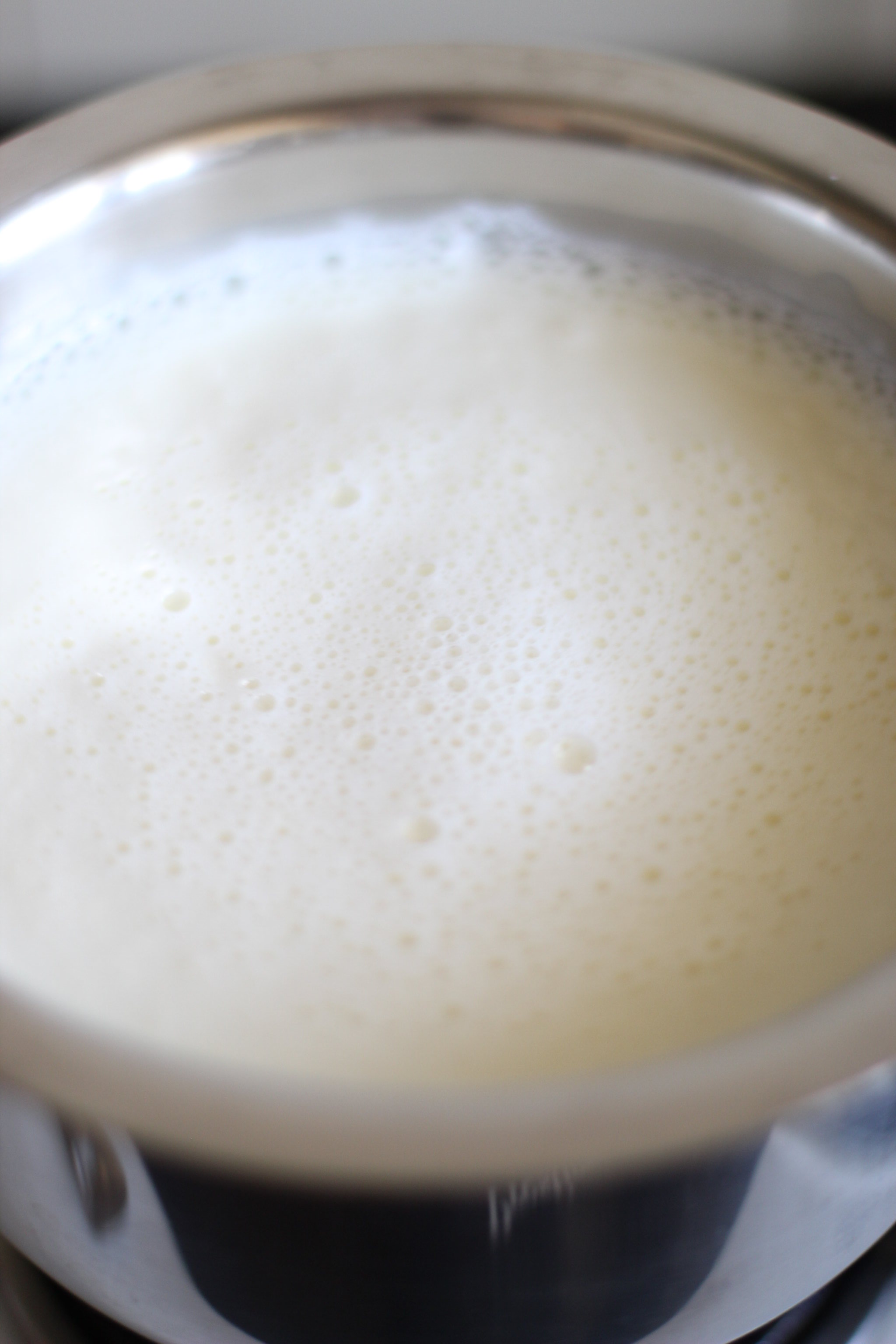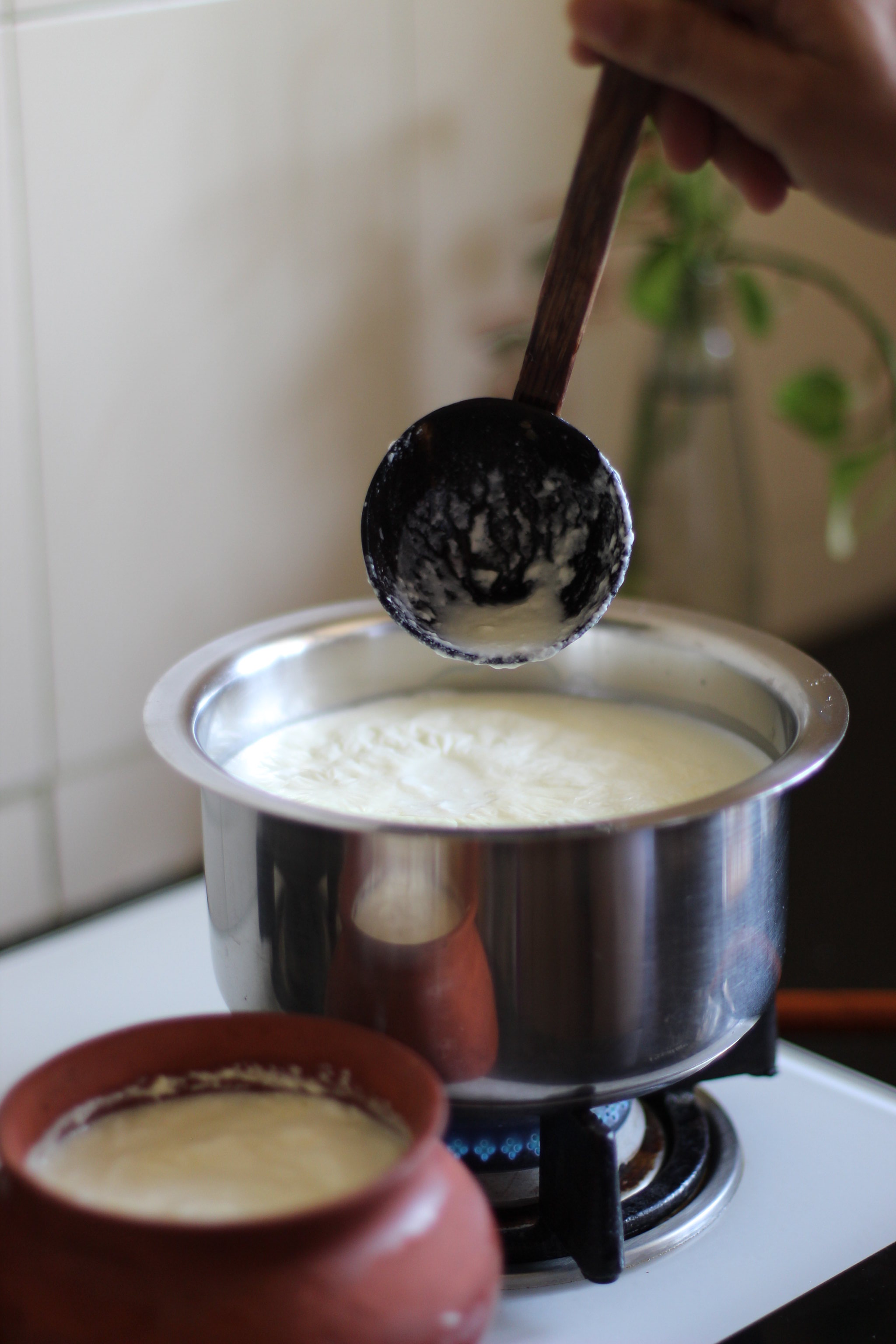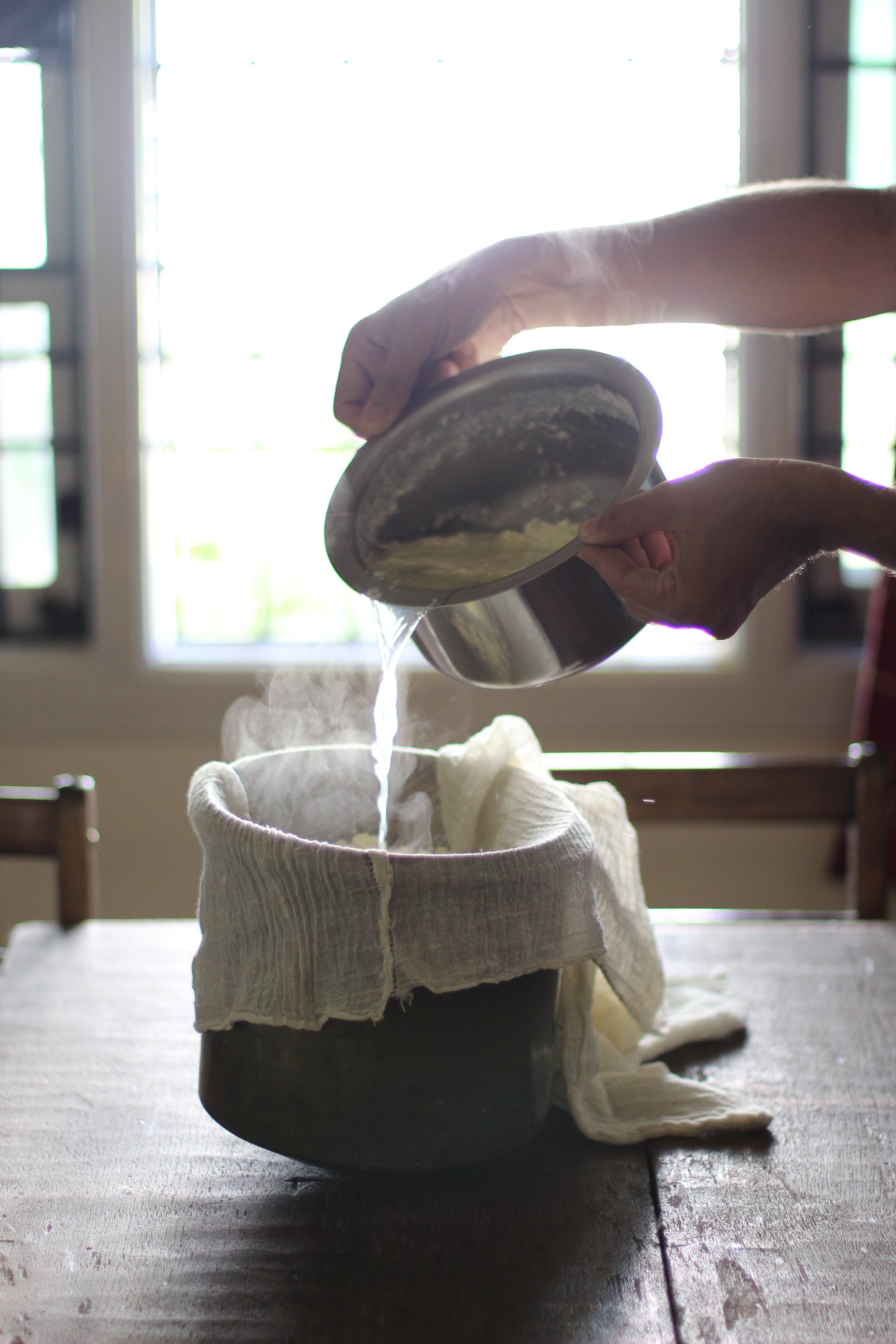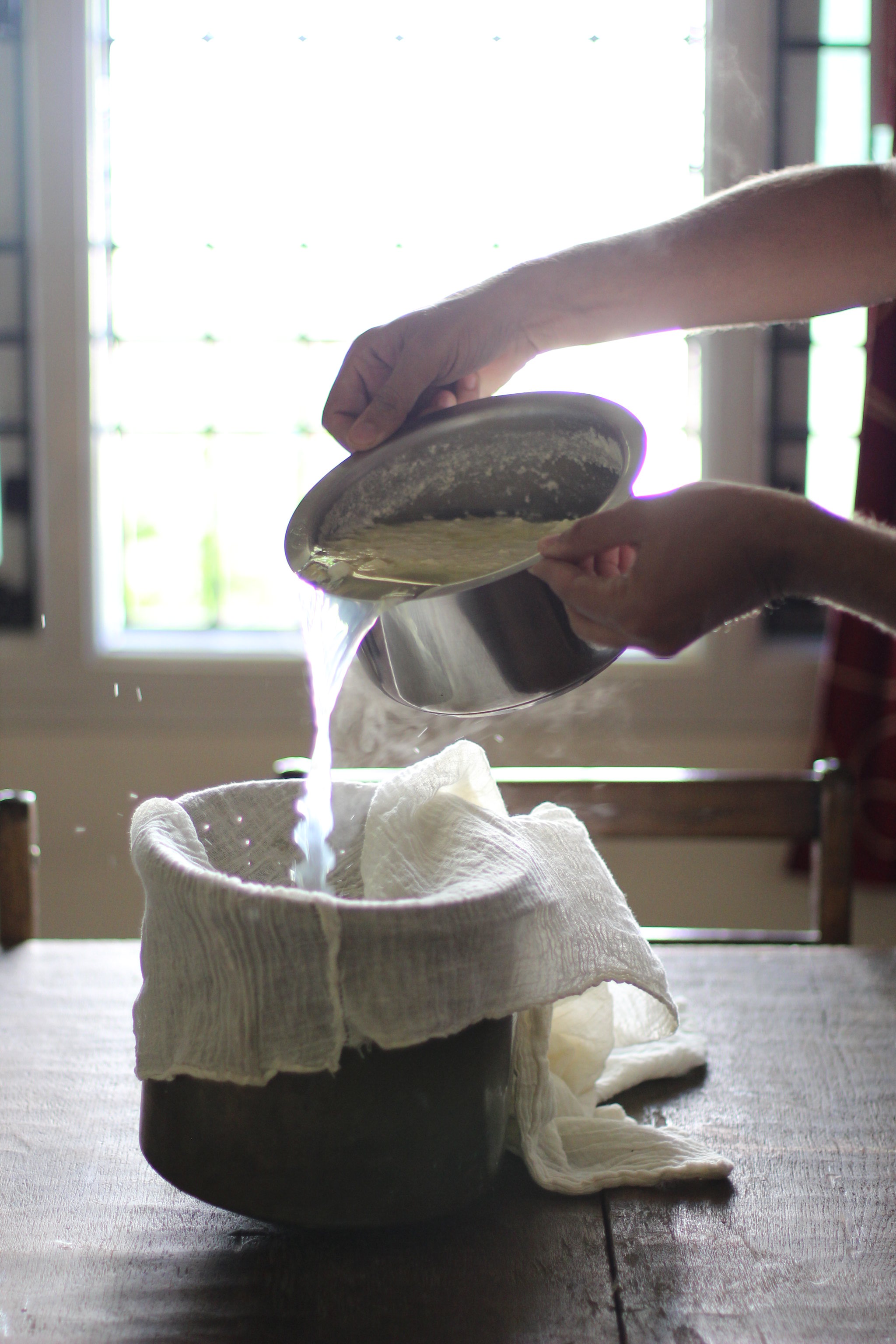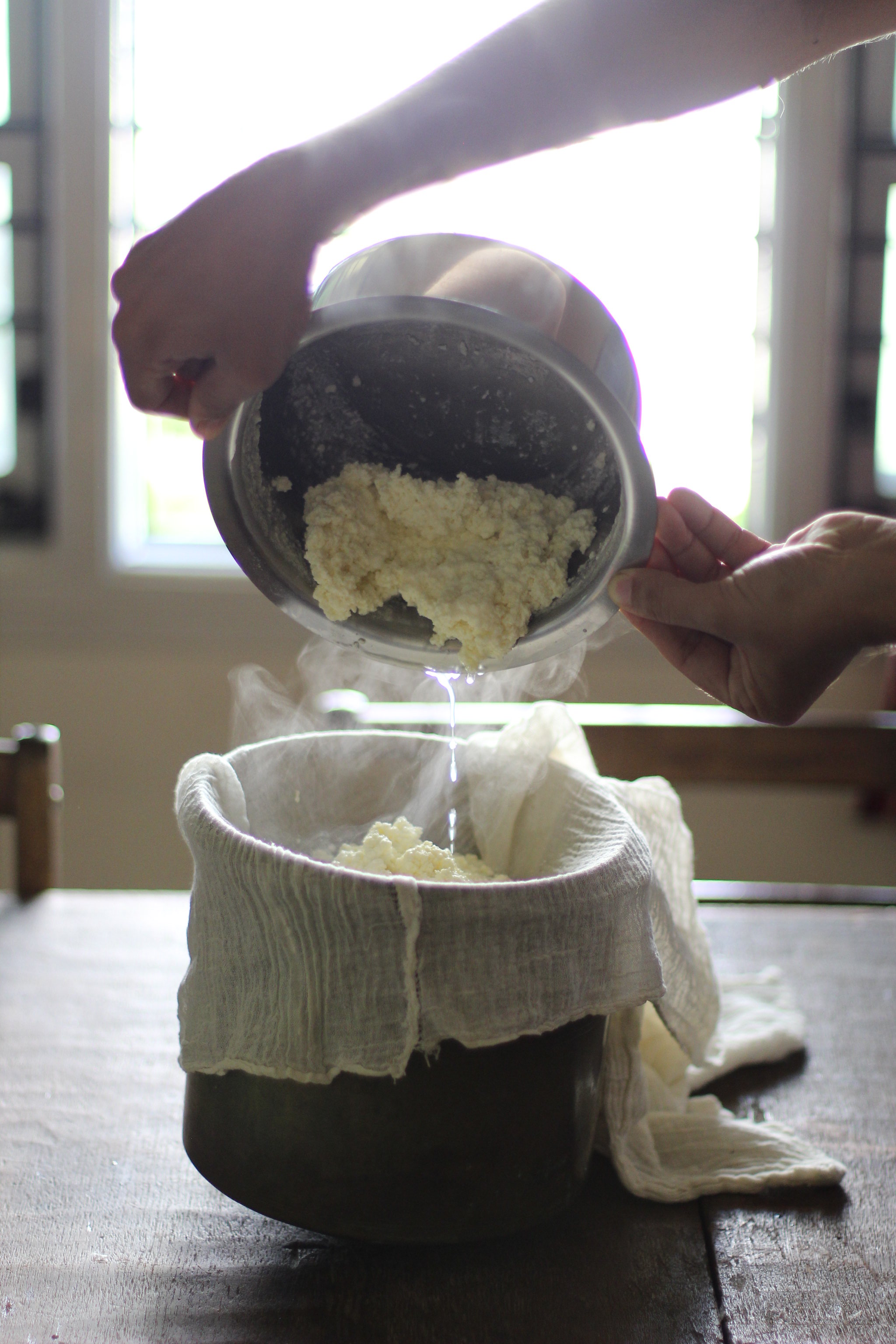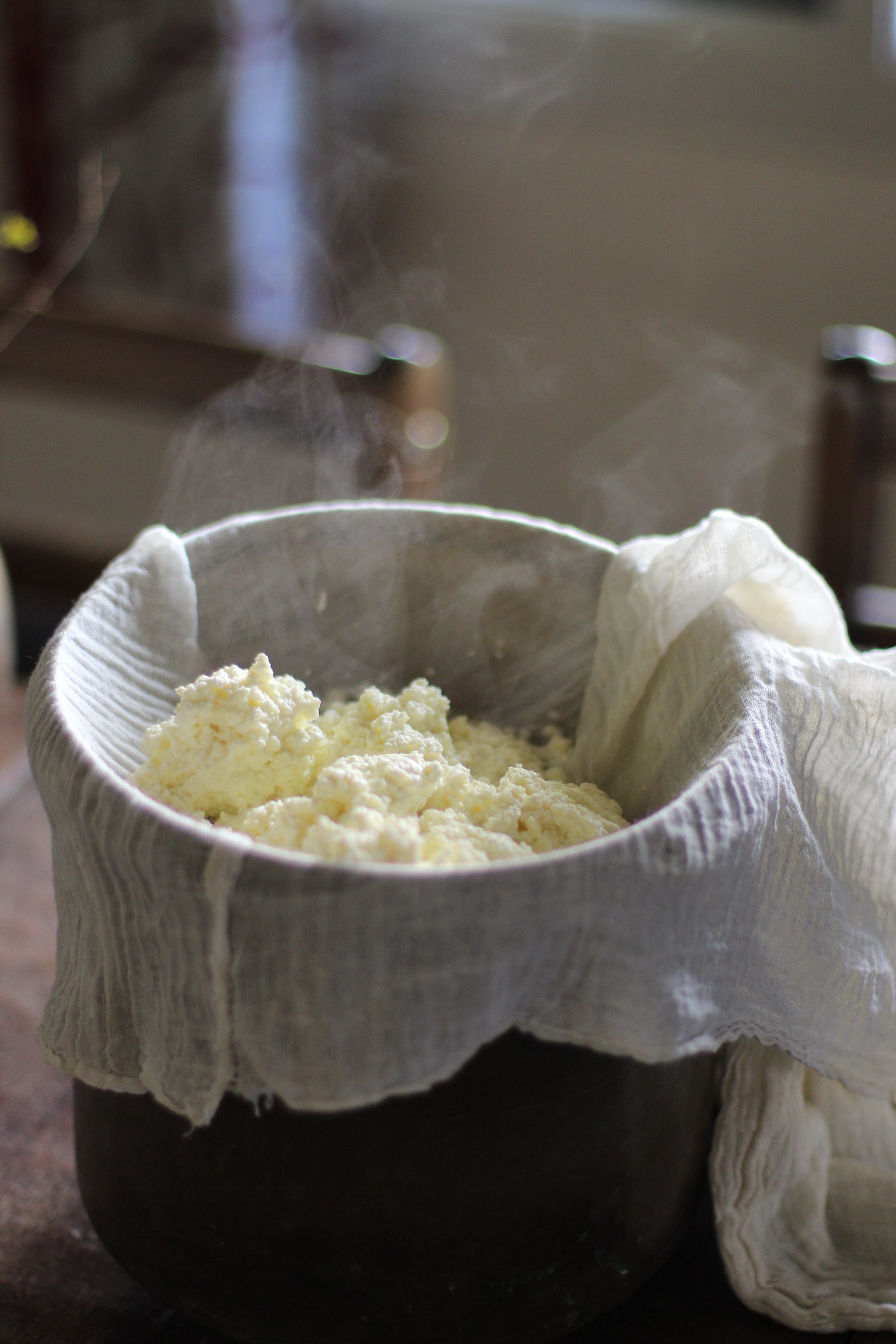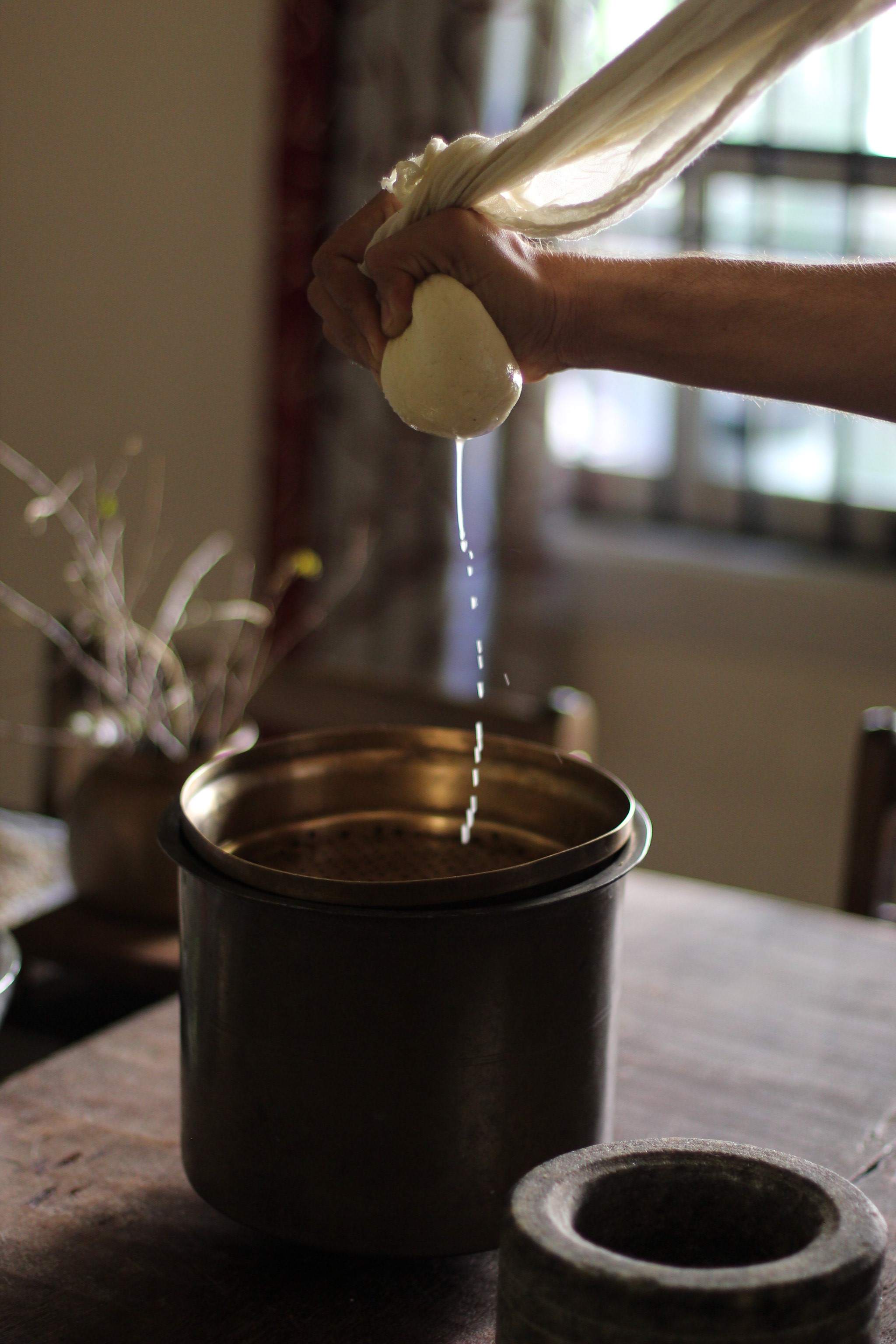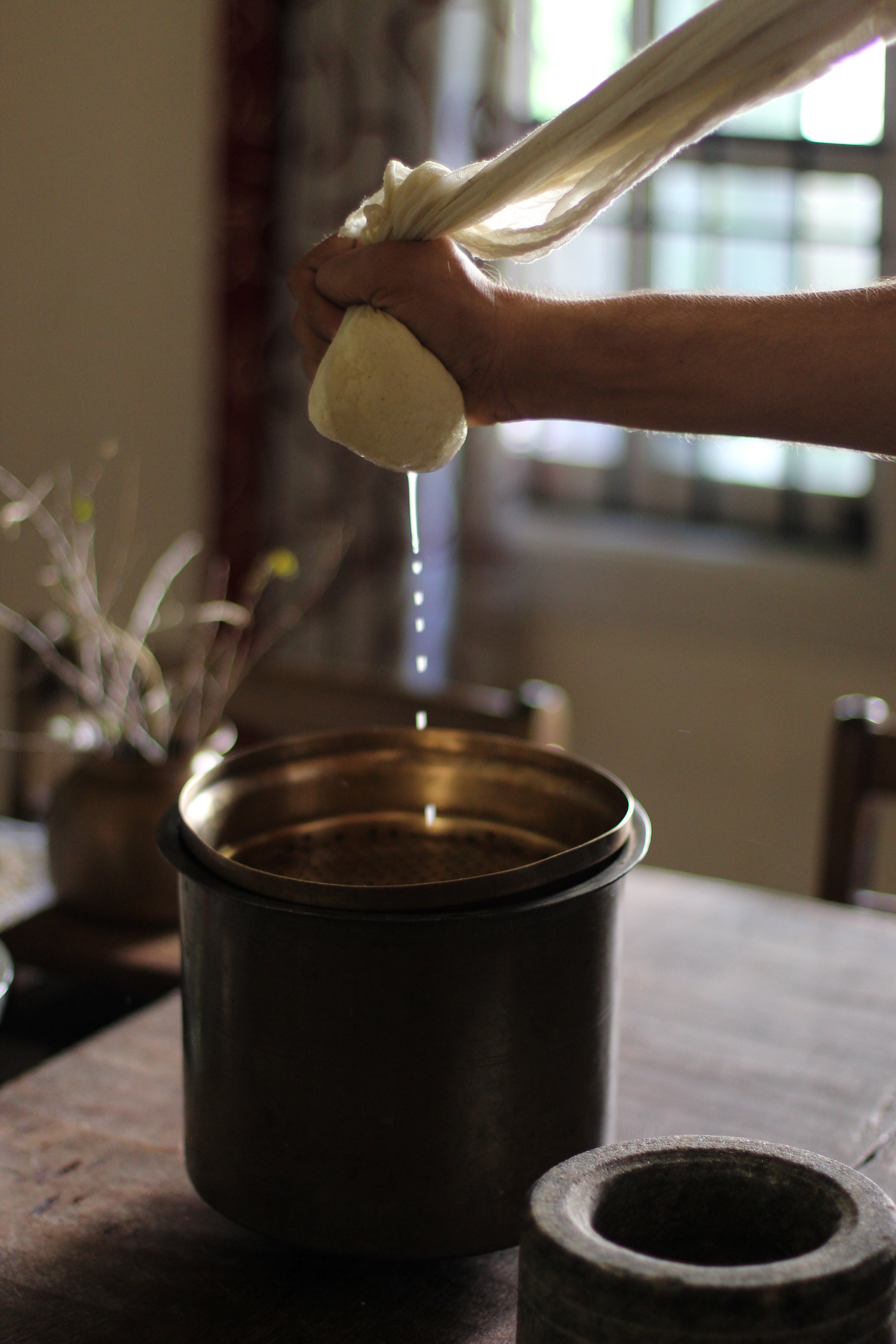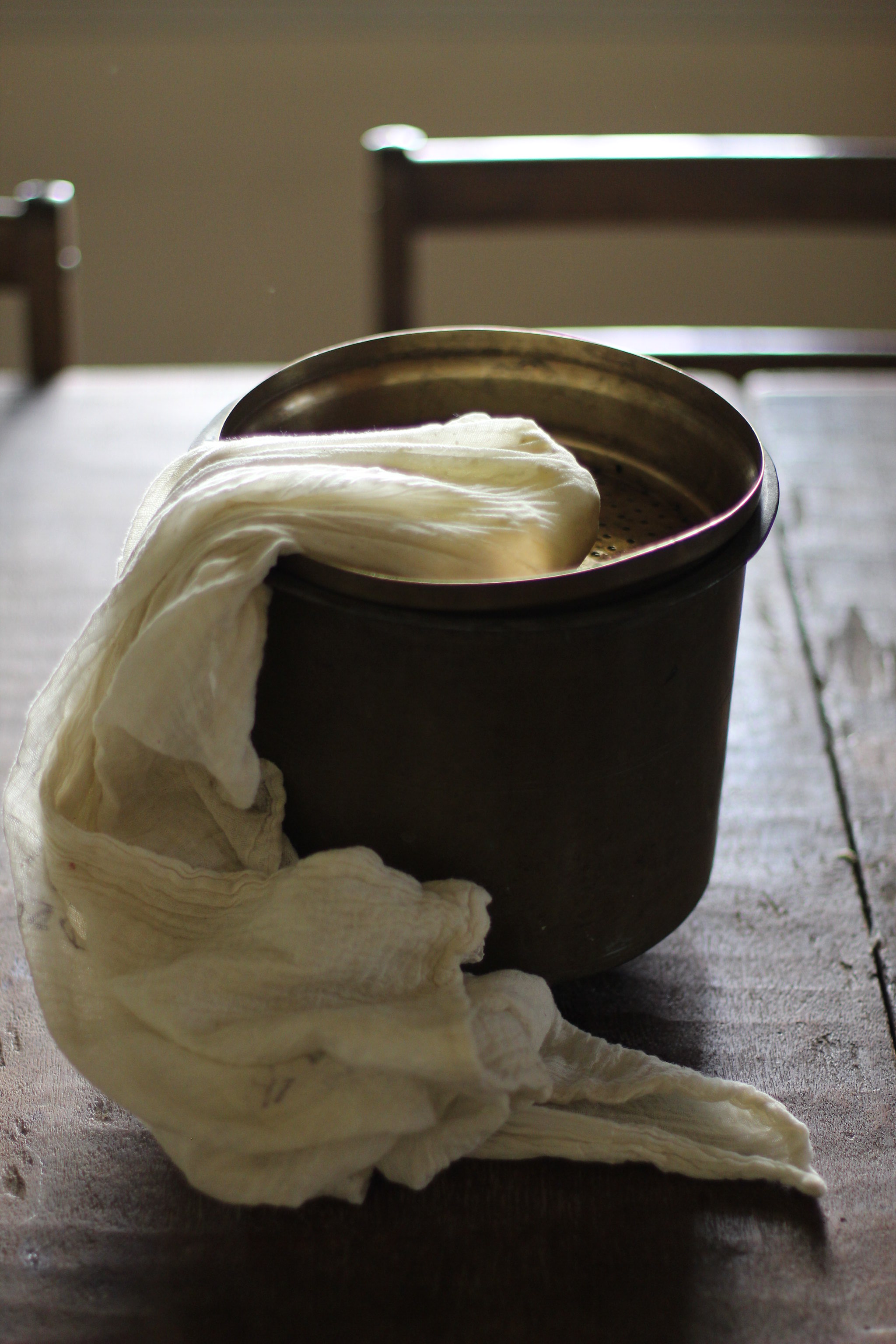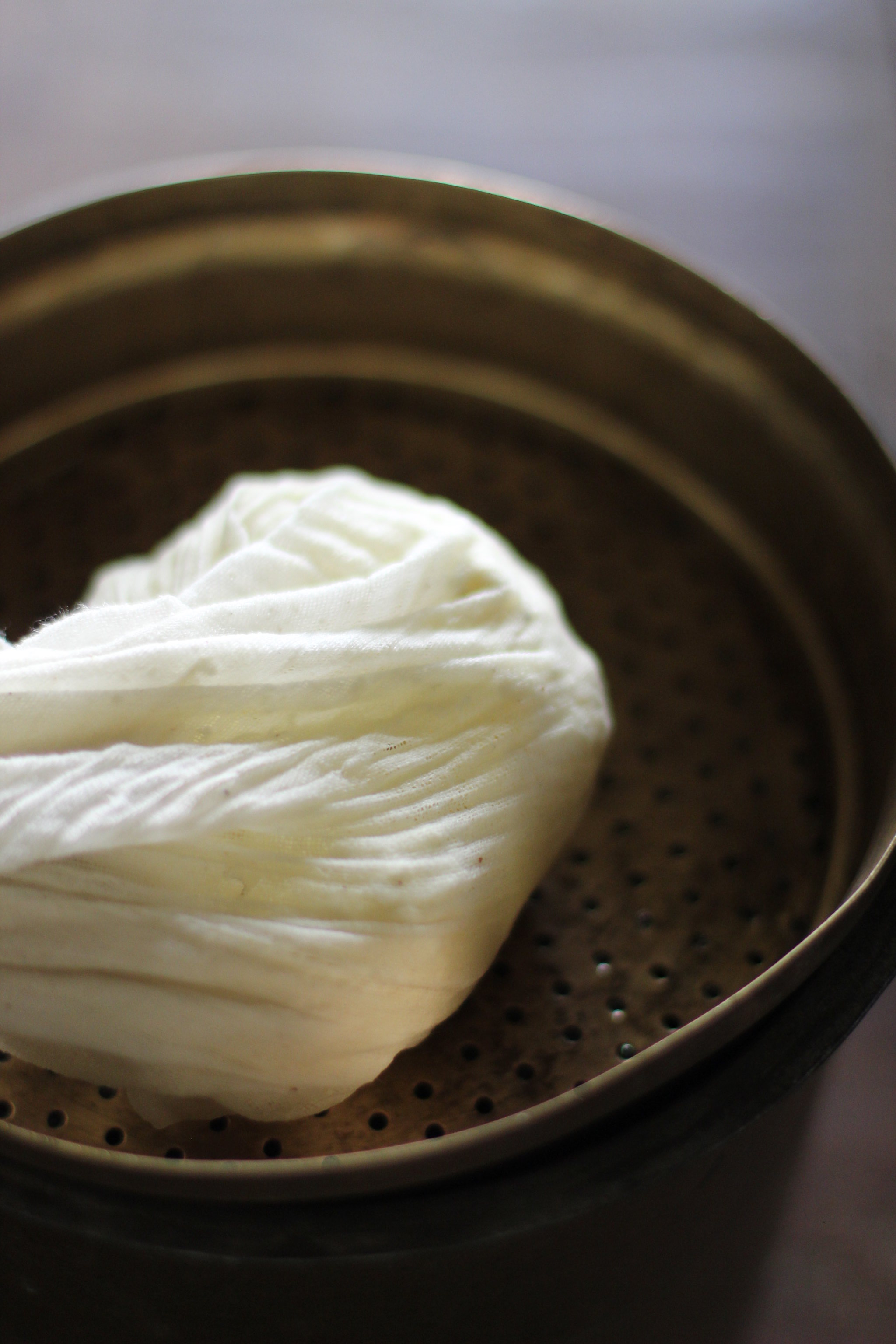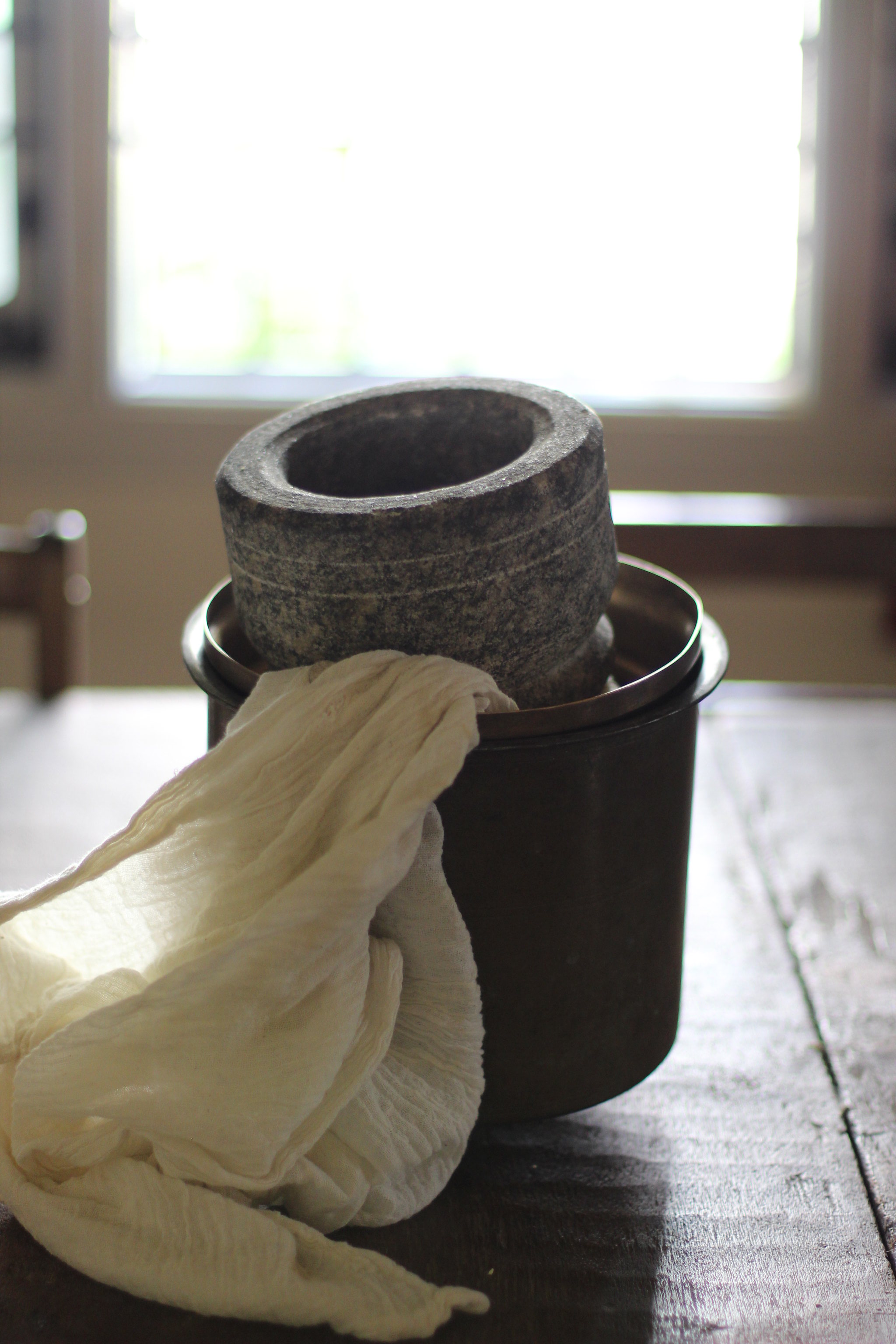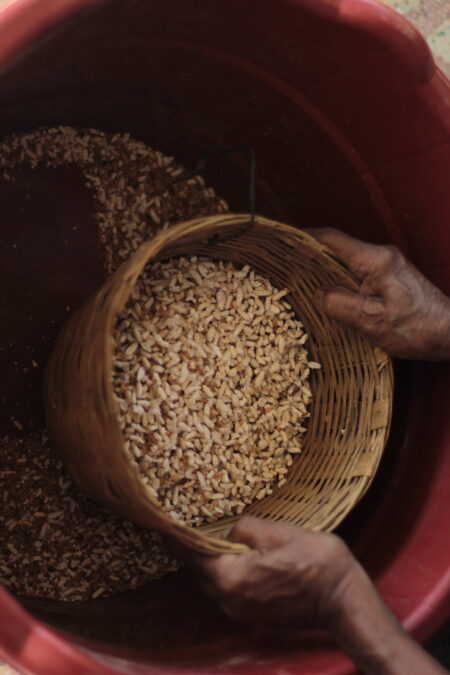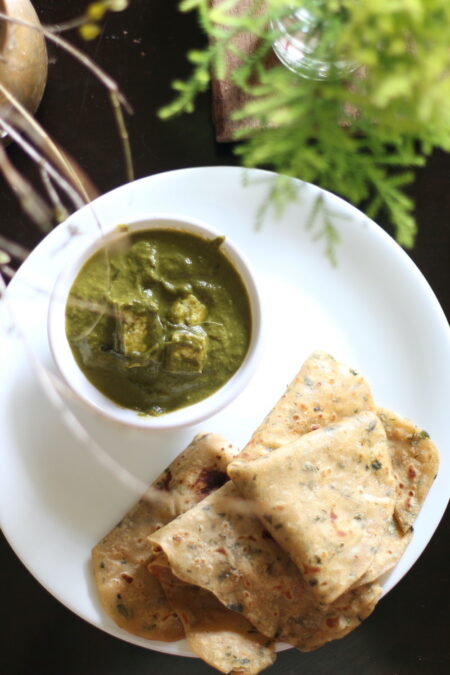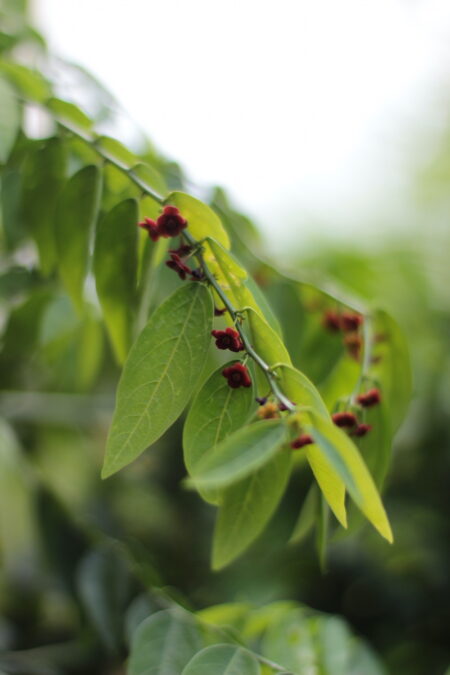“Amma, if paneer is so easy to make, why don’t you make it at home often?” asked this little (or not so little) boy who loves anything milky. After butter, it is paneer in his small list of favorites. I can still recall the first time I tasted paneer in a restaurant in Mangalore. I hated it! As I bit into the cubes of solid milky coagulated mass, I wondered what it was.
Many years later, I still love this chunky mass, and I make it at home. During the dreadful-covid and pregnancy days of 2021, I’d make paneer at home. This was photographed. What’s not to love about a pleasant-smelling, spongy, lightly acidic, precipitated mass of coagulated milk that holds its shape so firmly yet gets crushed when masticated and is so artfully made with heat and acid—and then, make something even tastier with these soft-melt-in-your-mouth ingredients?
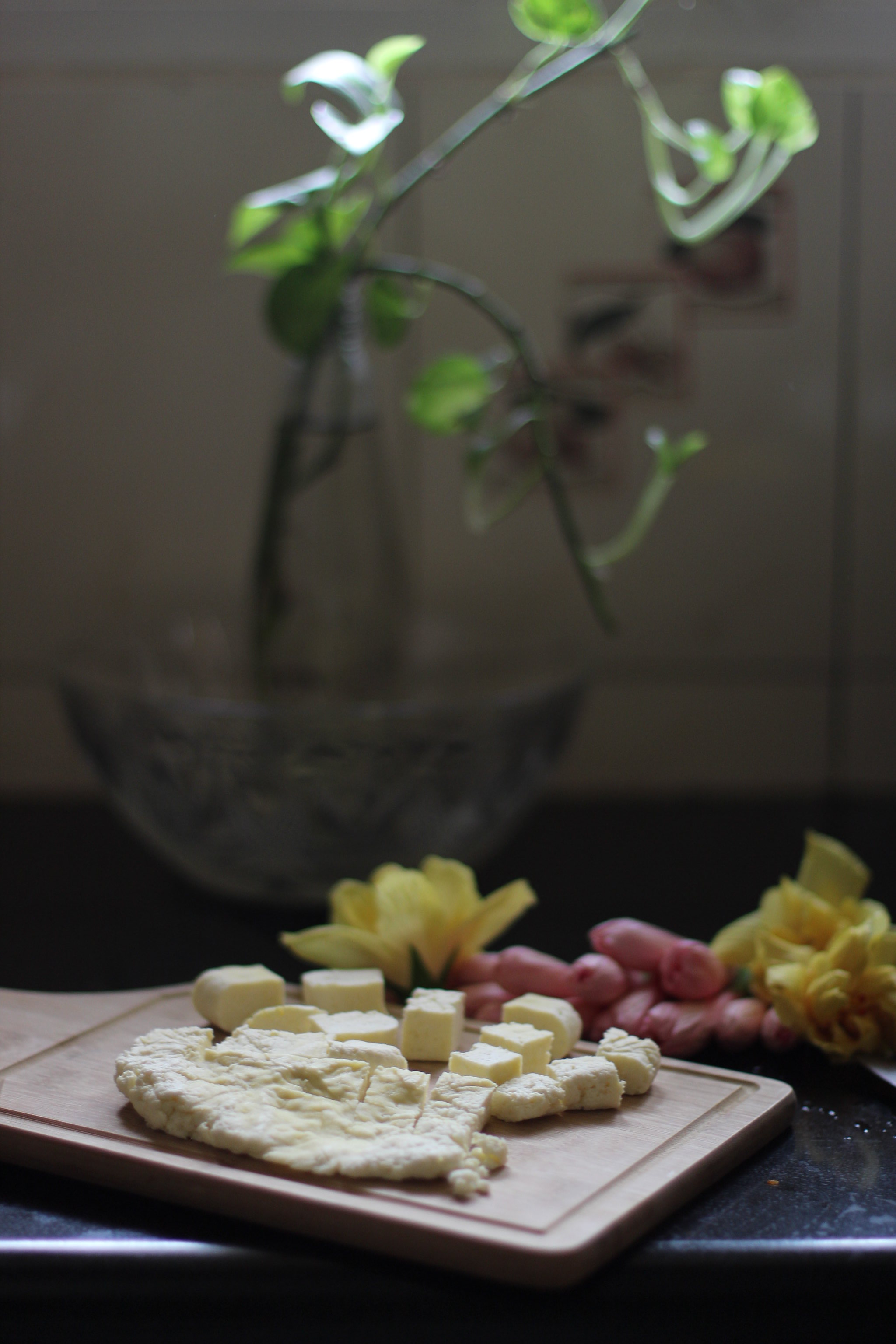


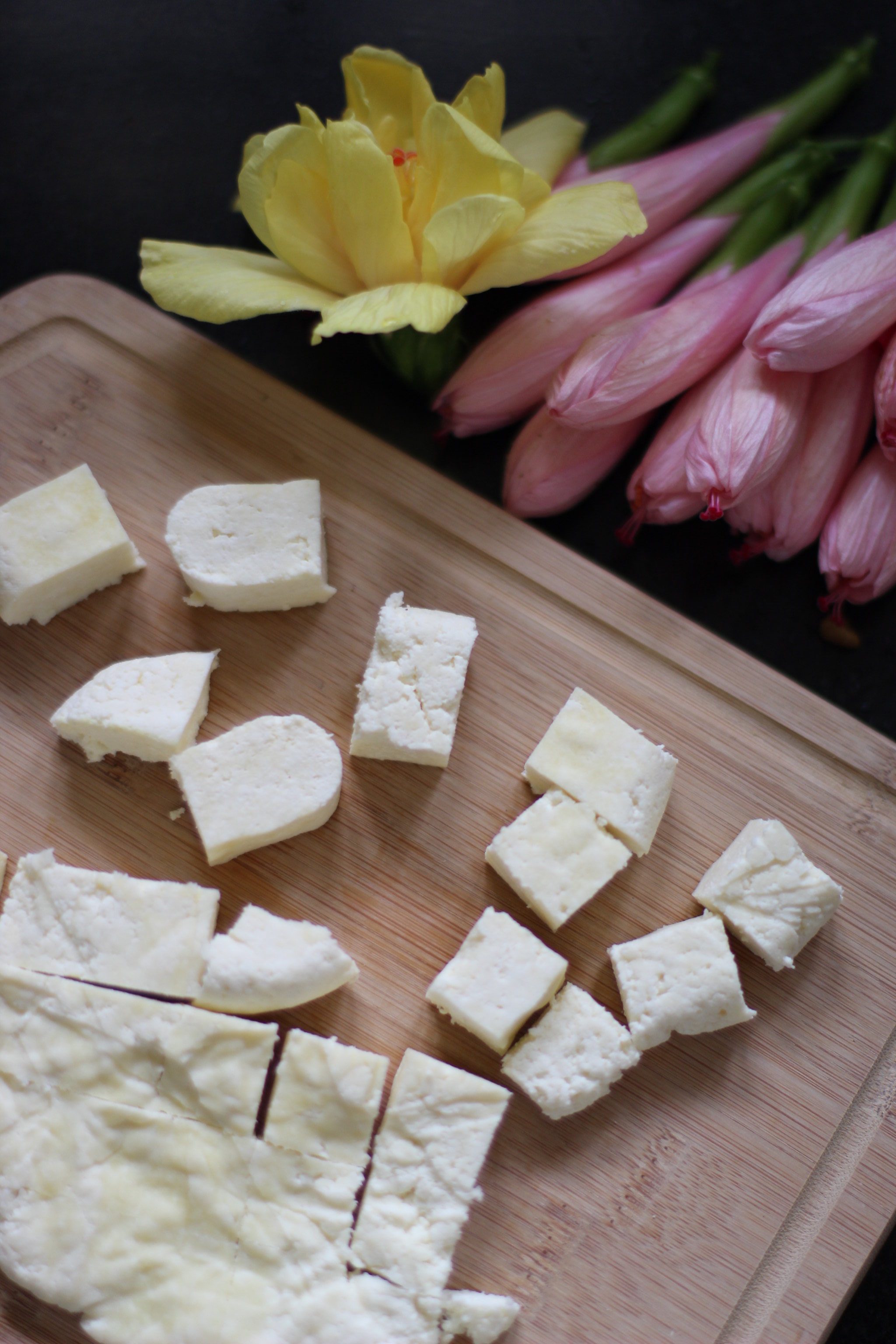



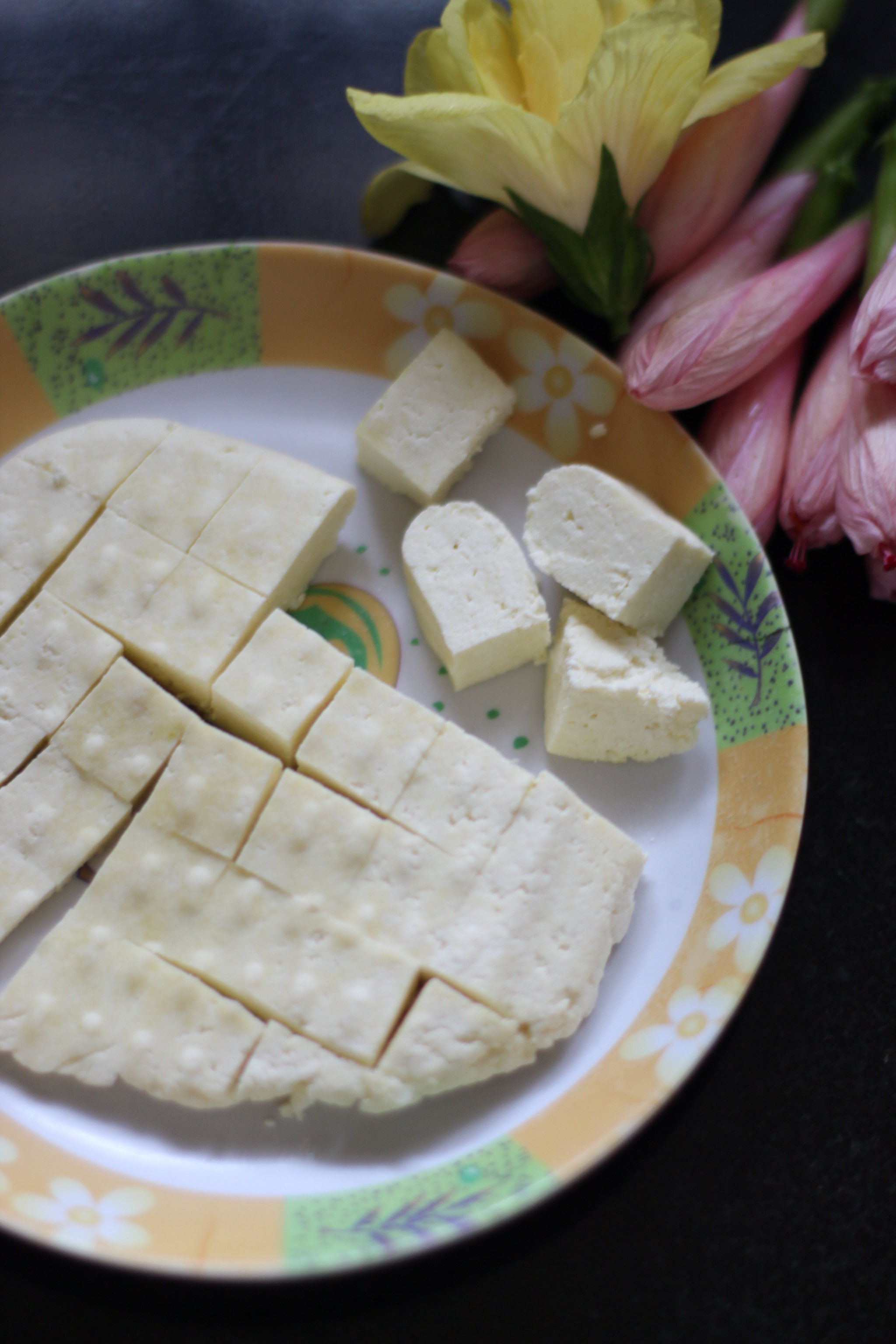
Paneer and cheese are very old things. So old, we can read that nomads on the Indian Deccan Plateau (Satavahana-Saka-Kushan Age), years after the Christian era began, ate something similar to paneer as part of their cuisine. This is the earliest thing one can read about the consumption of curdled counterparts of milk in India. That is indeed some lost cuisine. Eventually, it was Persian (Afghan and Iranian) travelers who introduced paneer (Peynir) to Indians in the 1600s. According to K. T. Achaya, or even Ayurveda, combining acids with milk is not acceptable in ancient Indian cuisine.

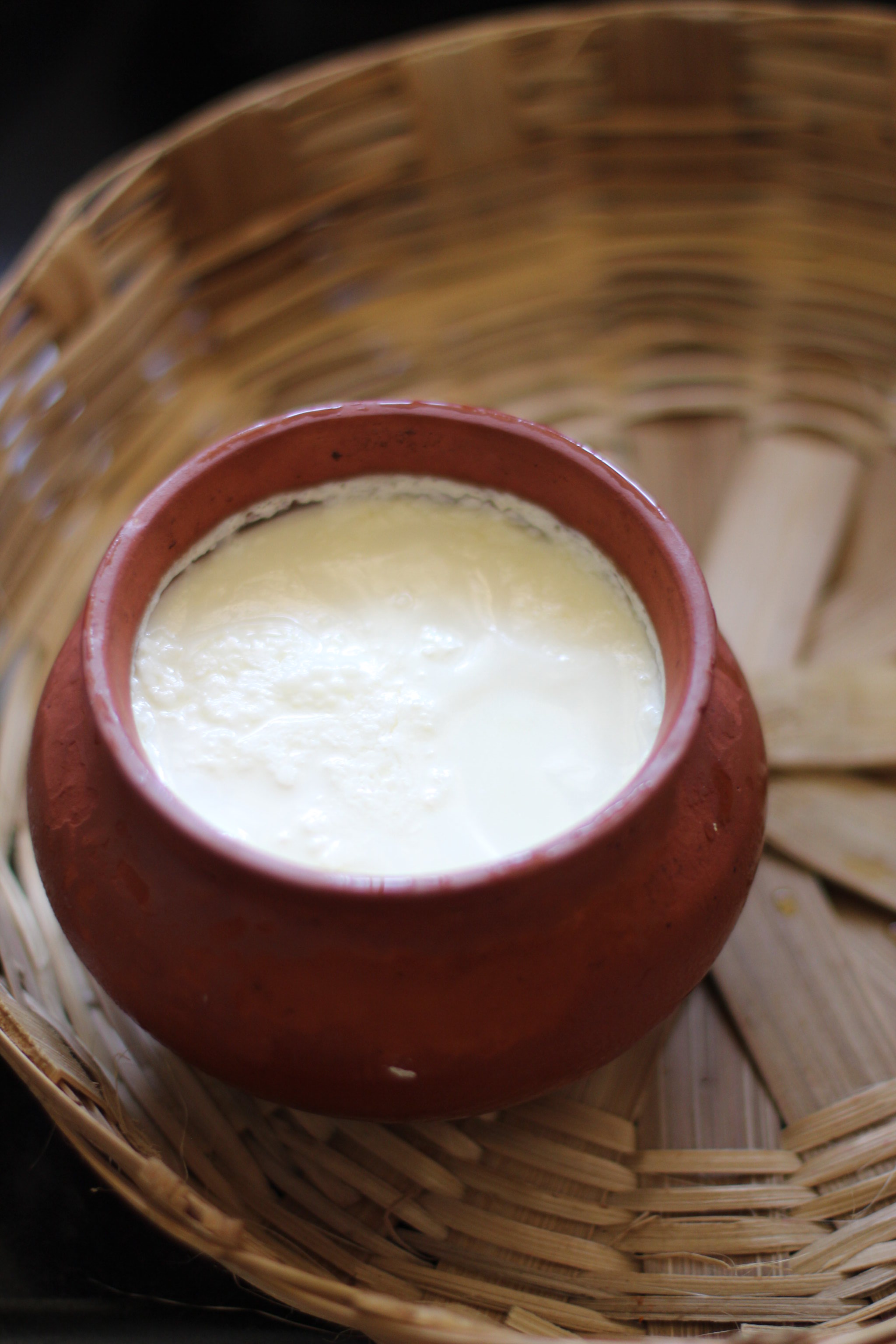
Besides, most of us see a slow curdling process in our lives every single day (milk slowly fermenting into yoghurt overnight), and the curdling (acidifying) is almost an integral part of the beginning of the human digestion process. It is clear that the milk spitting up by newborn babies is always coagulated. Stomach acids! It needs the existence of bacteria to start the process of changing the state of milk. That is chemistry altogether.
When I made my batch of paneer, freshly made yogurt went into boiling milk. This time I needed almost half a cup of yoghurt to separate the casein from the watery whey. One can use lemon juice or citric acid too. The Palash tree’s bark and even the Jujube fruit were once used by the Indian paneer makers as an enzyme to begin the curdling process. The process produces whey, a byproduct that yields far too delicious curries and gravies for pooris and chapattis.
For centuries, South-West Asians have been pioneers in paneer production. (Ref: https://www.ncbi.nlm.nih.gov/pmc/articles/PMC4008736/) Over time, a lot of coagulated derivatives were made and named by their respective makers throughout the world. Kashmir is proud of its Kalari, or Kaladi Paneer, a ripened form of paneer. Speaking of which, we have our very own Paneer Dodi which is a flower of the nightshade family, also called as the Indian Rennet (Withania coagulans), which is so dear to diabetics, some swear by it, some don’t, and some use them in a way that is suited for them.

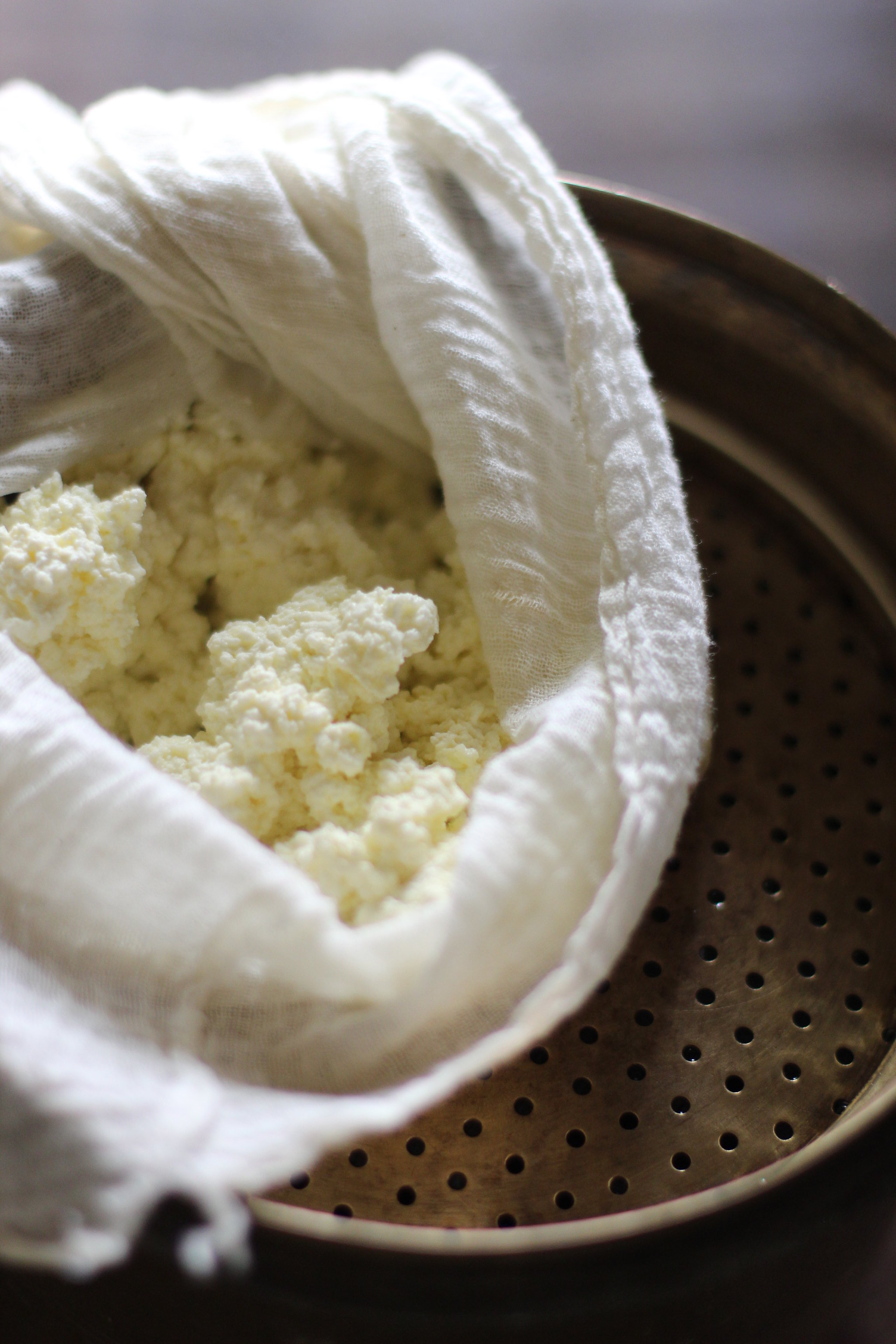

When I make my own, I’ll have my granite mortar (for pressing the paneer with a heavy weight), a muslin cloth, a sieve and a large vessel to collect the whey (which is an important byproduct too), waiting next to me for a hot steaming pour of that mixture of broken milk and whey. The whey trickles through that light weighted mul cloth, thats so dear to me, and then through the propped up old sieve and then into the large pot. Oh and then I could see that the sieve caught all that cushioned goodness waiting to be wrapped tightly around the mul cloth, wanting to be liberated from the moisturising whey. I then keep the mortar on the wrapped paneer and let the setup rest for an hour or so, to let the paneer release whatever is making it disintegrate. Once done waiting, unfold see the glamorous block of paneer sitting firm. Chop into cubes, eat them as is, make rasagullas or make anything you please.
The making of Paneer
- This recipe can be multiplied as and when your requirement for paneer changes. Usage of more amount of milk gives you a better and fuller block of Paneer.
Ingredients
- 2 litres – Full fat milk
- 0.5 cup – Yoghurt – (You can also use lemon juice or vinegar (1 tsp))
- A mul cloth
- A heavy weight for pressing the Paneer
Directions
- In a heavy bottom vessel, bring milk to a boil. Once the milk has reached the boiling point, add the souring agent you’ve chosen.
- The milk would immediately split and curdle.
- When the milk has completely curdled, turn off the heat and strain the whole mixture through a colander lined with a muslin cloth. Keep the whole setup in a large vessel to collect the watery whey.
- Once strained, remove out the excess whey, tie the muslin cloth tightly and place it on the colander. Keep a heavy weight on the the tied up paneer and this sit for about an hour os so. Let the excess whey drip away giving you a good block of fresh paneer.
